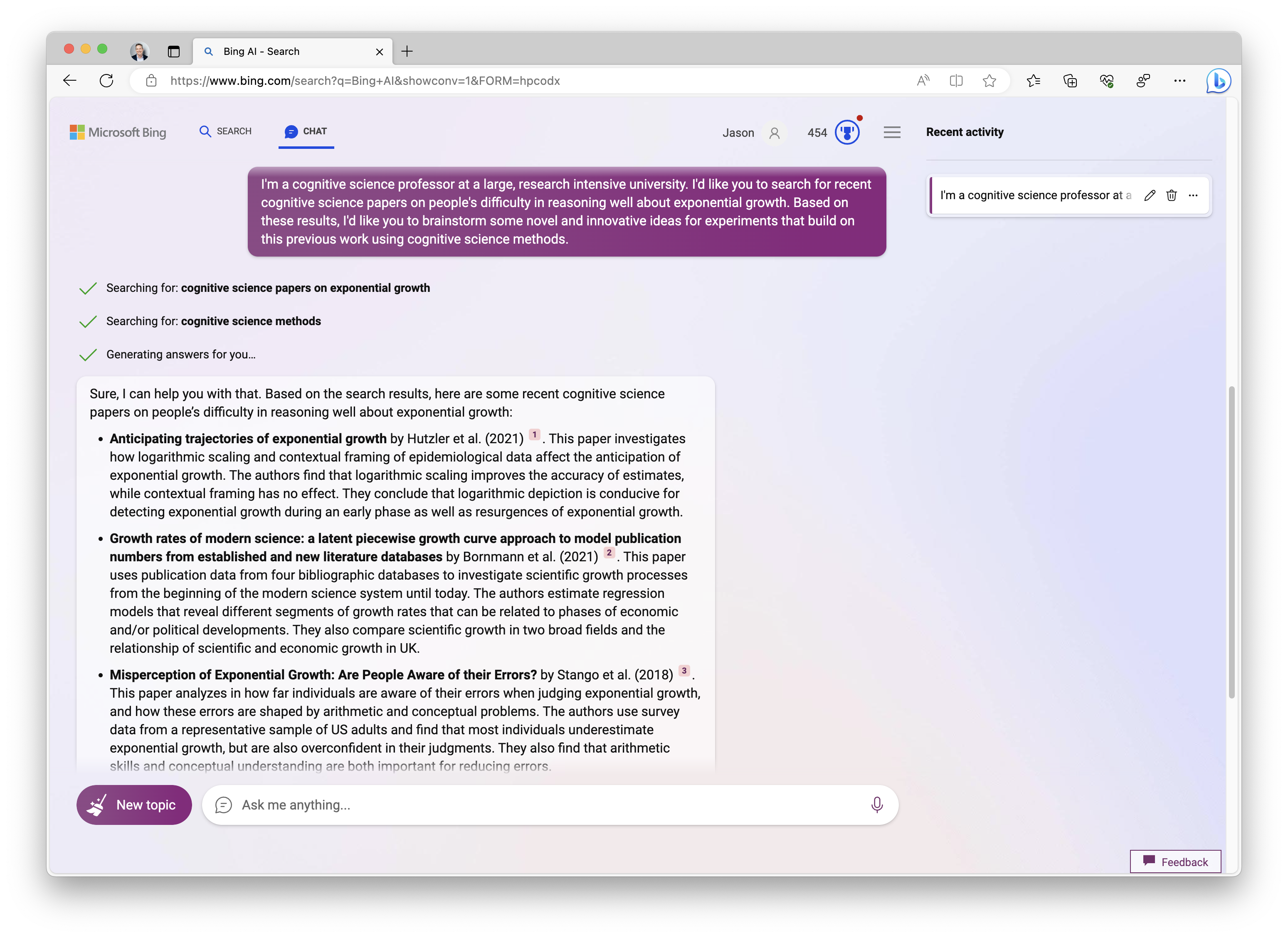15 Research Ideas
15.1 Develop innovative research ideas.
One of the challenges that researchers face is finding and reviewing the relevant literature for their research topic. This can be time-consuming and tedious, especially when there are many papers to read and compare. Fortunately, there are some tools that can help researchers automate parts of this task by using LLMs to search, analyse, and extract information from scientific papers.
One such tool is Elicit, which is an AI research assistant that uses language models to help researchers automate research workflows, such as parts of literature review. Elicit can find relevant papers without perfect keyword match, summarise takeaways from the paper specific to the question, and extract key information from the papers. For example, if you ask Elicit “What are the effects of meditation on cognitive performance?”, it will return a list of papers that address this question, along with a summary of the main findings and the methods used in each paper.
Another tool is Consensus, which is a search engine that uses AI to extract and distill findings directly from scientific research. Consensus only searches through peer-reviewed, published sources, and uses natural language processing to read the papers and extract key findings. For example, if you ask Consensus “Does creatine help build muscle?”, it will return a list of papers that answer this question, along with a score that indicates how strong the evidence is for each paper.
These tools can help researchers save time and effort by providing them with quick and easy access to the most relevant and reliable sources for their research topic. They can also help researchers discover new perspectives and insights that they might have missed otherwise.
However, these tools are not perfect, and they have some limitations that researchers should be aware of. For example, they may not be able to capture all the nuances and details of the papers, or they may miss some important papers that are not indexed or accessible by the tool. Therefore, researchers should always verify the information provided by these tools by reading the original papers themselves.
Another challenge that researchers face is generating novel and innovative research ideas that can advance their field. This can be difficult and frustrating, especially when there are many existing studies and theories on a topic. How can researchers come up with original and interesting questions or hypotheses that have not been explored before?
One possible way to overcome this challenge is to use ChatGPT as a brainstorming partner. ChatGPT can generate human-like text responses to a wide range of topics, including science, history, mathematics, and current events. By providing ChatGPT with a prompt or a question related to your research topic, you can get some suggestions or ideas from ChatGPT that you can use as inspiration or starting points for your own research.
For example, I’m interested in studying people’s difficulty in reasoning well about exponential growth, which is a phenomenon that affects many domains such as biology, economics, psychology, and social sciences. I’d like to to come up with some novel and innovative ideas for experiments that build on this previous work using cognitive science methods, so I might use a prompt like this:
15.1.1 Prompt
I'm a cognitive science professor at a large, research intensive university. I'd like you to list some recent cognitive science papers on people's difficulty in reasoning well about exponential growth. Based on these results, I'd like you to brainstorm some novel and innovative ideas for experiments that build on this previous work using cognitive science methods.

As you can see, these models can generate some plausible and relevant ideas for experiments based on the prompt and the papers. Of course, these ideas are not fully developed or validated, and they may not be feasible or original. Therefore, researchers should always evaluate and refine the ideas generated by ChatGPT by doing more literature review, conducting pilot studies, or consulting with experts.
However, ChatGPT can be a useful tool for stimulating your creativity and generating some initial ideas that you can work on further. By conversing back and forth with ChatGPT, you can explore different aspects of your research topic, ask follow-up questions, or provide feedback to ChatGPT. This way, you can use ChatGPT as a brainstorming partner that can help you overcome your mental blocks and spark your imagination.
Here are some tips and suggestions on how to use ChatGPT effectively for generating research ideas:
Use Bing or a version of GPT-4 that has web access if you want to access the most recent papers that may not be indexed by other tools. This way, you can get the most up-to-date information and findings for your research topic.

Use GPT-4 if you are going to ask about scientific papers, since GPT-3.5 tends to hallucinate or make up facts that are not true or supported by the literature. GPT-4 is a newer and more advanced version of ChatGPT that has been trained on more data and has better accuracy and reliability.
Provide clear and specific prompts or questions to ChatGPT that indicate your research topic, domain, method, and goal. This will help ChatGPT generate more relevant and useful responses for your research needs.
Be critical and skeptical of the responses generated by ChatGPT. Do not take them at face value or assume that they are correct or valid. Always verify the information provided by ChatGPT by reading the original sources or doing your own research.
Be open-minded and curious about the responses generated by ChatGPT. Do not dismiss them as irrelevant or trivial. Try to understand the logic and reasoning behind them, and see if they can inspire you to think differently or creatively about your research topic.